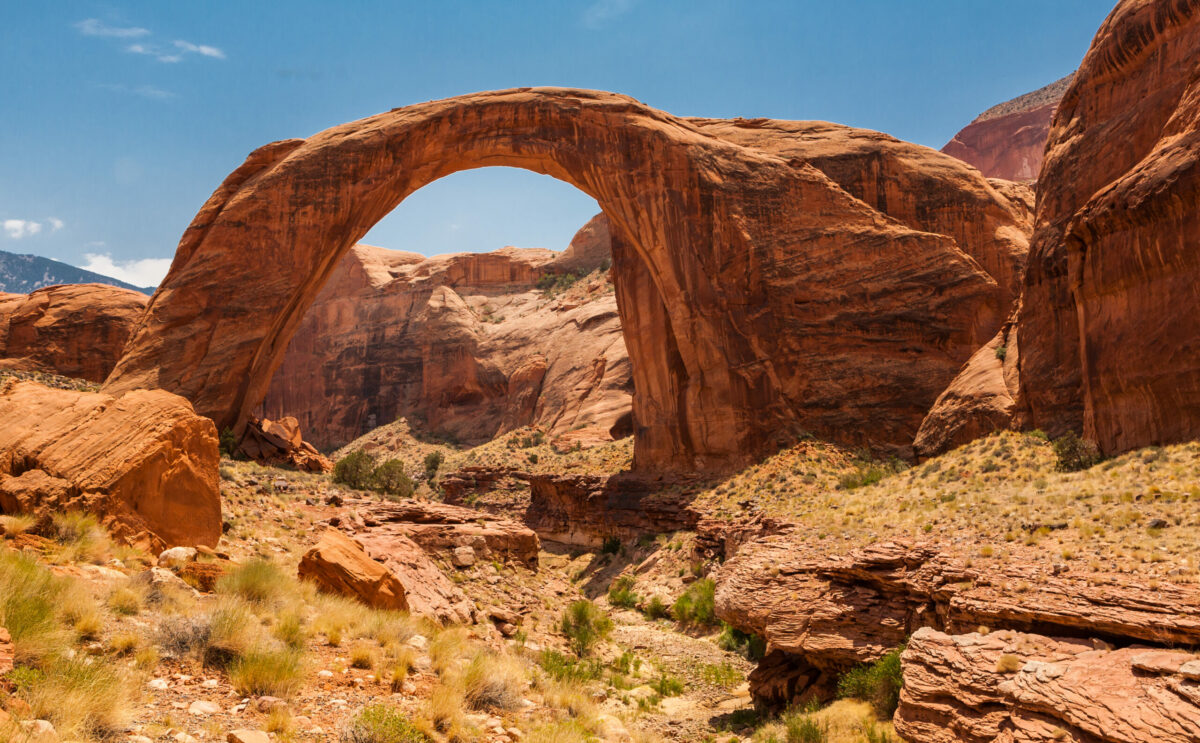10 Lesser-Known National Monuments to Add to Your Bucket List
As national parks like Zion, Glacier, and Acadia become more crowded with timed entry and reservations, visitors seek an escape from the park crowds. Now is a great time to explore the quieter world of lesser-known national monuments that offer their own unique charm and significance.
While the National Park designation is the most prestigious, National Monuments feature more locations and overlapping attractions with some of the top parks without those pesky crowds.
I’m going to highlight some of my favorites from adventures around the country.

National Park vs National Monument
In simple terms, it seems easy enough to say that a park is a natural area and a monument is a structure that commemorates something. However, in the world of public lands, that’s not always the case.
For example, the Statue of Liberty is a National Monument, while the Washington Monument is a National Memorial. The St. Louis Gateway Arch is indeed a monument, but it has been designated a National Park since 2018. Before that, it was a memorial. It was never a National Monument.
Let’s get down to bare bones and explain the difference between a national park and a national monument.
Oversight & Approval
The National Park Service (NPS) always oversees National Parks, and those parks must be approved by Congress. That can be an arduous process.
Presidents designate National Monuments, offering a faster track to protect the land or feature. The Antiquities Act of 1906 paved that path for presidential approval. National Monuments can be overseen by NPS, United States Forest Service (USFS), or U.S. Fish & Wildlife Service (USFWS), just to name a few.
Purpose
Another key difference between National Parks and National Monuments comes down to the purpose. National Parks protect swaths of land for scenic and recreational value.
National Monuments protect land for historical, prehistorical, or cultural significance. These are generally smaller than a national park.
Features
National Parks cover a broad stroke of ecosystems and unique elements, whereas a National Monument protects just one feature or limited features.
For example, Yosemite National Park in California and Devils Tower National Monument in Wyoming both protect iconic natural features: Yosemite preserves stunning granite cliffs, waterfalls, and giant sequoia trees, while Devils Tower safeguards a unique geological formation—a massive hexagonal column of igneous rock rising dramatically from the surrounding landscape with a cultural significance to Native American tribes.
Visitation
The National Park System oversees 84 National Monuments and 63 National Parks as of 2024, yet the national parks got 28% of all NPS visitors in 2023. National Monuments brought in just 6%.
Now, let’s look at some of the lesser-known National Monuments that should be on your travel bucket list.
Petroglyph National Monument
New Mexico
A visit to Petroglyph National Monument near Albuquerque, New Mexico, offers a fascinating glimpse into the lives of ancestral Pueblo people. Is it worth the trip? Yes. Even National Geographic ranked it among the 20 Coolest Travel Adventures in the World for 2024.
The monument protects one of the largest petroglyph sites in North America, with designs and symbols carved into the volcanic rocks by Native Americans as far back as 350 to 700 years ago. Three volcanic cinder cones can be explored before reaching a sacred area that is off-limits.

Grand Staircase-Escalante National Monument
Utah
It’s as grand as the canyon and a geological staircase but often gets overlooked for the more popular Zion National Park or any other of Utah’s Mighty 5. The Bureau of Land Management oversees this topographical treasure chest.
Grand Staircase covers the plateaus that descend from Bryce Canyon to the Grand Canyon. The bottom layer of Bryce Canyon is the top rock layer at Zion, while Zion’s bottom layer is the Grand Canyon’s top layer. You see all of this in one location at Grand Staircase-Escalante National Monument, and you still get hoodoos, arches, slot canyons, and pristine night skies.
In addition, Grand Staircase is centrally located to Utah’s Mighty 5 and the Grand Canyon.
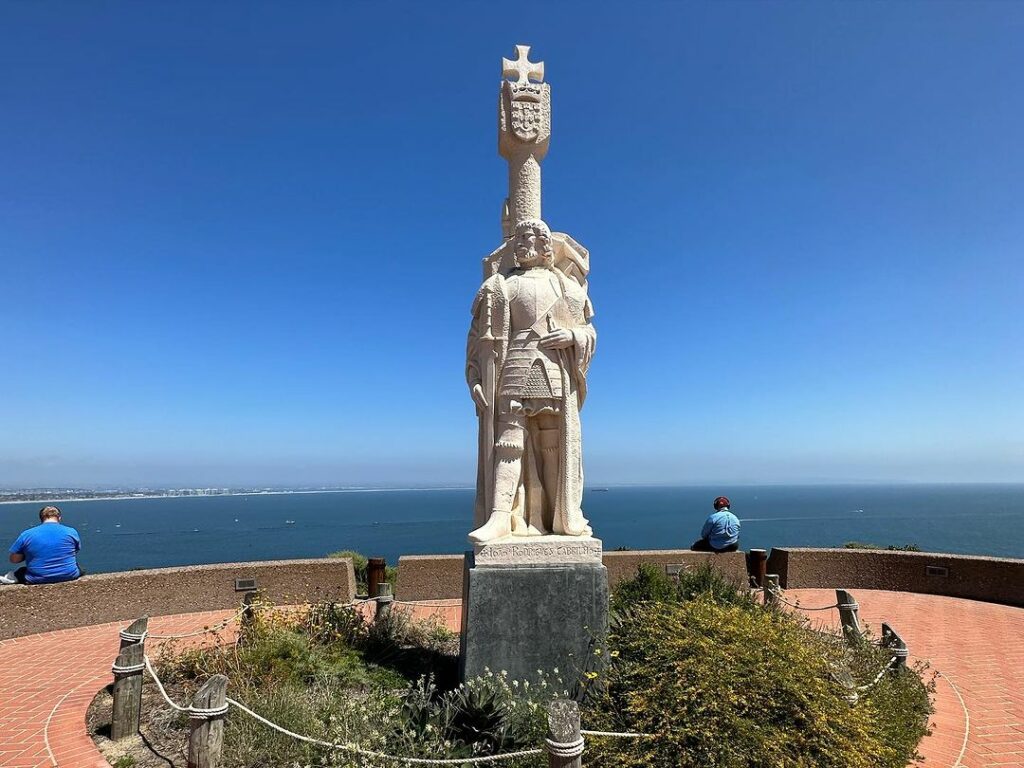

Cabrillo National Monument
California
We talk a lot in school about the pilgrims and the pioneers of the East Coast who made their way west, but this San Diego landmark celebrates the first European exploration of the West Coast. Juan Rodriguez Cabrillo arrived in 1542 and made the first known contact with Indigenous People.
The site went on to become an important military overlook and ship-guiding from the Old Point Loma Lighthouse. Things to do at Cabrillo National Monument include the scenic view atop the mound where Carbillo’s status stands and exploring tidepools on either side of the coastline.
I couldn’t get enough of this view when I visited about 10 years ago but watch out for those winds at the top of the monument. I lost my favorite hat there. One more travel tip – try to plan your trip to visit during Open Tower Days so you can climb the lighthouse.
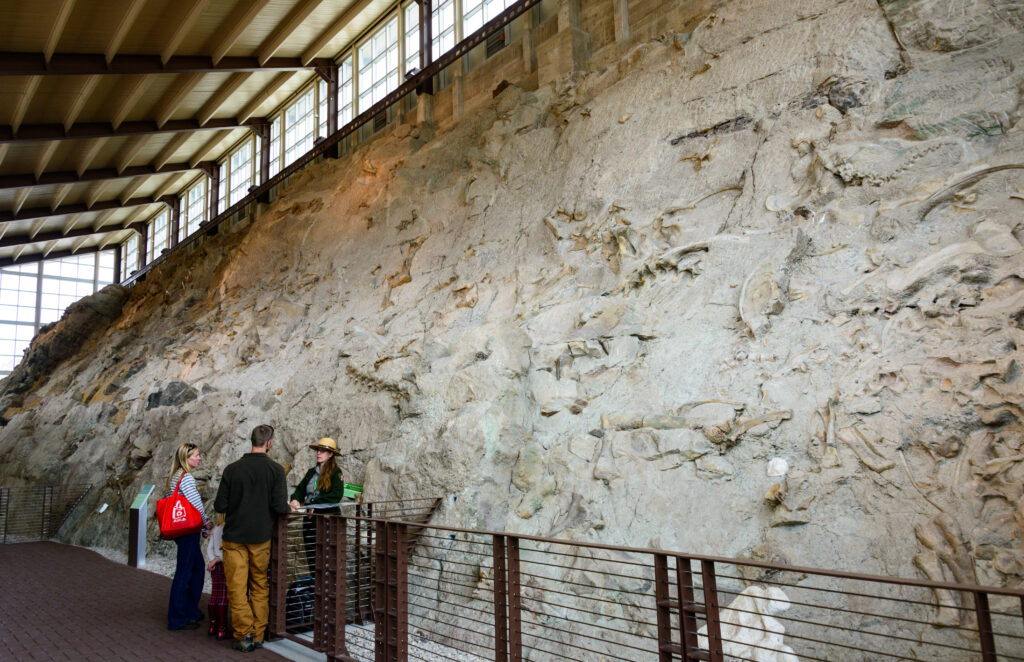
Dinosaur National Monument
Colorado/Utah
Perhaps if this ever becomes a national park, they could name it Jurassic Park. The monument straddles the Colorado/Utah state line. A highlight is the Quarry Exhibit Hall, where more than 1,500 dinosaur bones and fossils are embedded in the wall. A few displays are even hands-on.
My favorite indoor feature was the life-sized skeletons with murals on the wall behind to see what the dinos looked like in the late Jurassic period.
Heading outdoors, this park rocks for whitewater rafting on the Green and Yampa Rivers. While it’s not the Colorado River at the Grand Canyon, you won’t be able to tell the difference when you’re soaring down Hell’s Half Mile.
Hikes range from easy to extreme, and you can see the layers of sediment that tell a story dating back millions of years. You can even see pictographs and petroglyphs on the Swelter Shelter Trail.
For what it’s worth, I will never understand why this isn’t a national park.
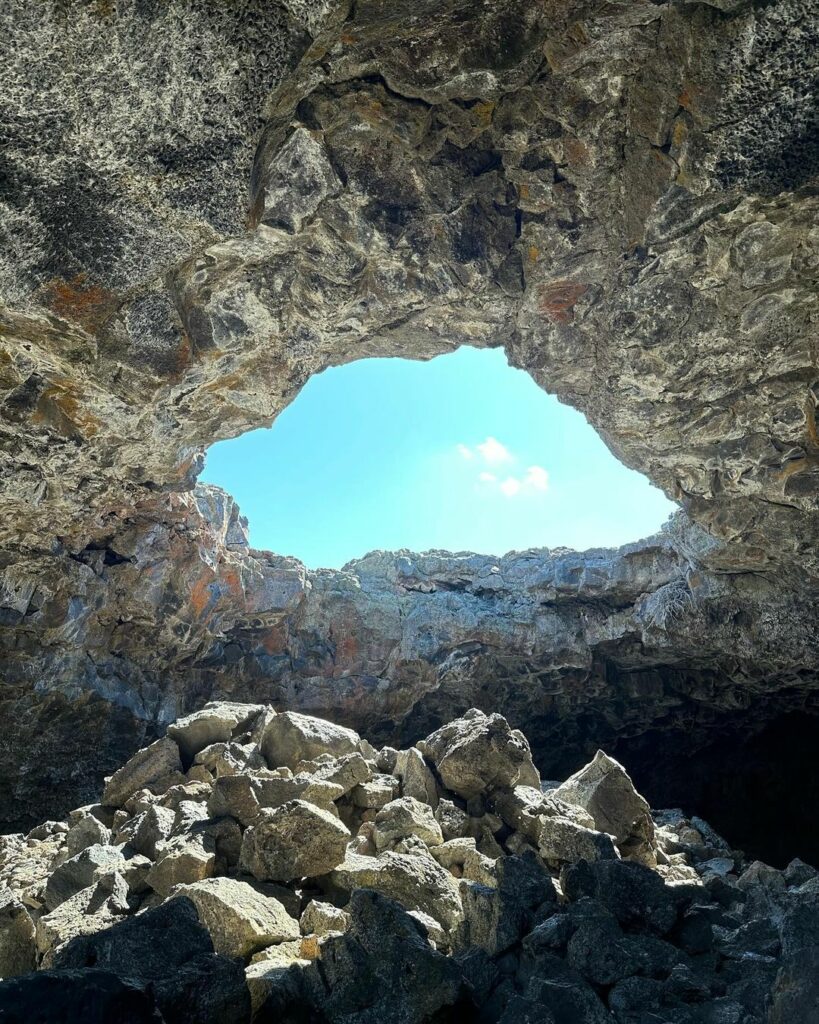
Craters of the Moon National Monument
Idaho
Maybe someday we’ll have a national park on the moon, but for now, we’ll settle for Idaho’s Craters of the Moon National Monument. The trail is eerily similar to the Haleakala Crater Hike on Maui and brings the essence of Hawaii Volcanoes National Park on the mainland across a basaltic lava field.
Most hikes above ground are less than two miles long, and two lava tubes (caves) are open for exploration with the proper permit. Short trails lead to several of the 52 cinder cones, with paved pathways keeping you off the sensitive vegetation and lava fields.
As an added bonus to this rather dreary yet dramatic landscape, you can see fresh wildflowers in late spring.
NASA has brought astronauts here all the way back to Apollo 14 and currently for future Mars missions due to the otherworldly landscape.
TRAVEL TIP: If you like the features here but can’t go as far as Idaho, Lava Beds National Monument in California has striking similarities, including a larger system of lava tubes. The key difference is that the lava beds here are much older.
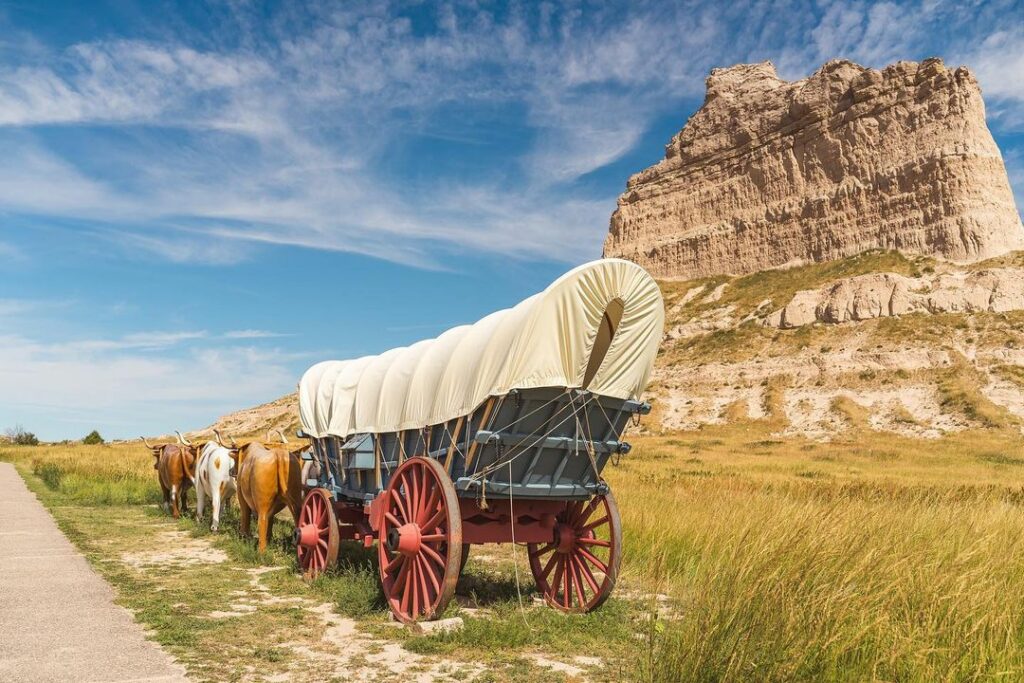
Scotts Bluff
Nebraska
After a long drive across Nebraska, which is so flat you can almost see the curve of the Earth, any hill is welcomed. However, you get a stunning geological feature at Scotts Bluff.
Scotts Bluff National Monument is as interesting to see as it is to learn about, as the cultural significance dates back to Indigenous people and then the emigrants on the Manifest Destiny trails of Westward Expansion.
Even if you’re just driving through, Summit Road is less than two miles through three tunnels and leads to several overlooks with short trails. The road is white-knuckler, with steep drops and hairpin turns, but it offers arguably the best view in Nebraska.
Four miles of trails lead you to different bluffs, with living history exhibits scheduled throughout the year along the way. I recommend the Oregon Trail Pathway (especially if you ever died around here from dysentery playing the video game), as you can still see the wagon grooves in the dirt.
As a Nebraskan who travels often with pets, I love that this park is pet-friendly if you’re a responsible owner who keeps a pet on a leash. This is where my dogs got their BARK Ranger award.
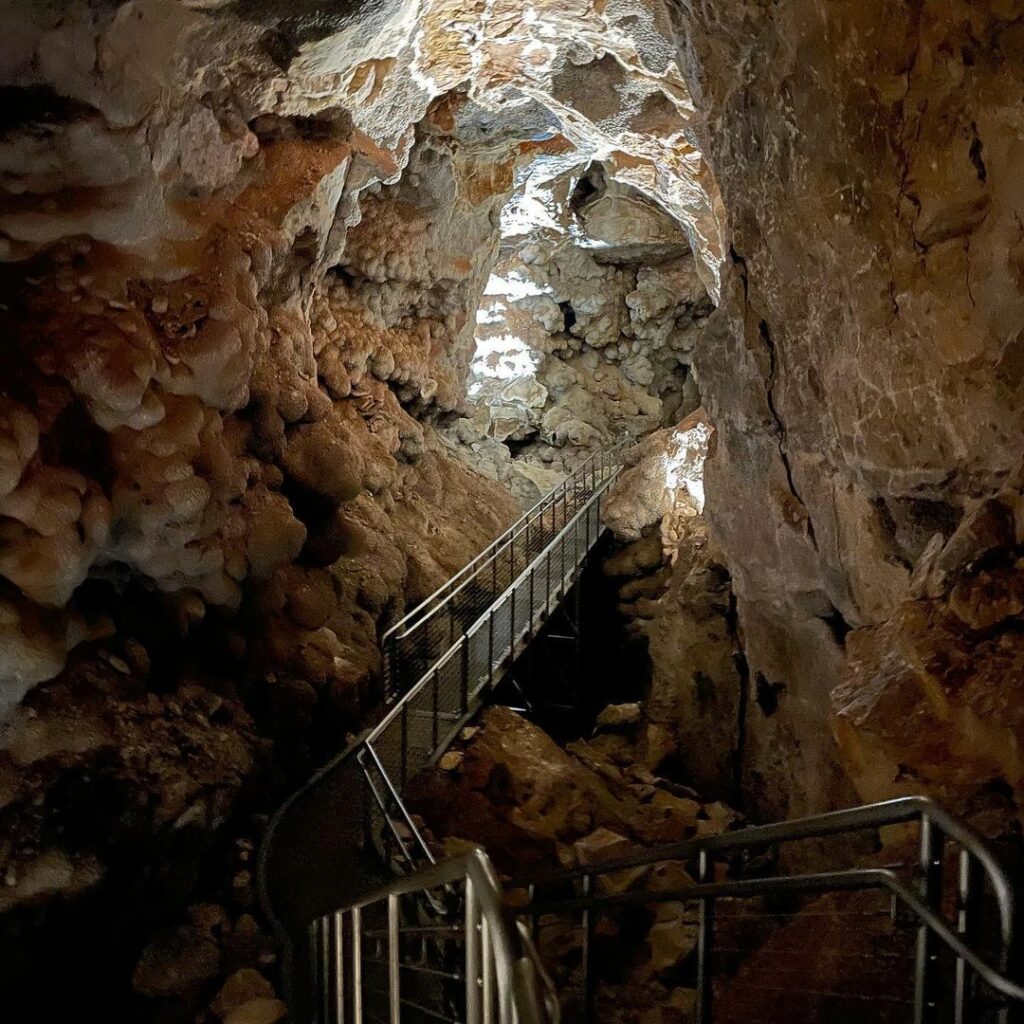
Jewel Cave National Monument
South Dakota
Underground adventures await in South Dakota, and Jewel Cave National Monument is one of the coolest cave experiences in the country. It sits in the shadow of Wind Cave National Park, about 30 miles east, and it makes a great addition or backup plan.
NOTE: Wind Cave National Park won’t offer cave tours during the 2024 season due to the elevator replacement, so switch that cave tour for Jewel Cave. You won’t regret it.
Jewel Cave National Monument has more than 200 miles of underground trails and can only be accessed by ranger-guided tours. The most daring tour is the Historic Lantern Tour, which can be as scary as it is strenuous (in all the best ways, of course).
A handful of other tours showcase the “jewels” of Jewel Cave, which was named by explorers awestruck by the glittering crystal-lined chambers. While the sparkle comes from the calcite crystals in the bedrock, it’s still a gem of a place to visit. The best family-friendly option is the Discovery Tour.
Several trails are available above ground, but you’d likely want to explore the Black Hills National Forest for a more robust hiking network.
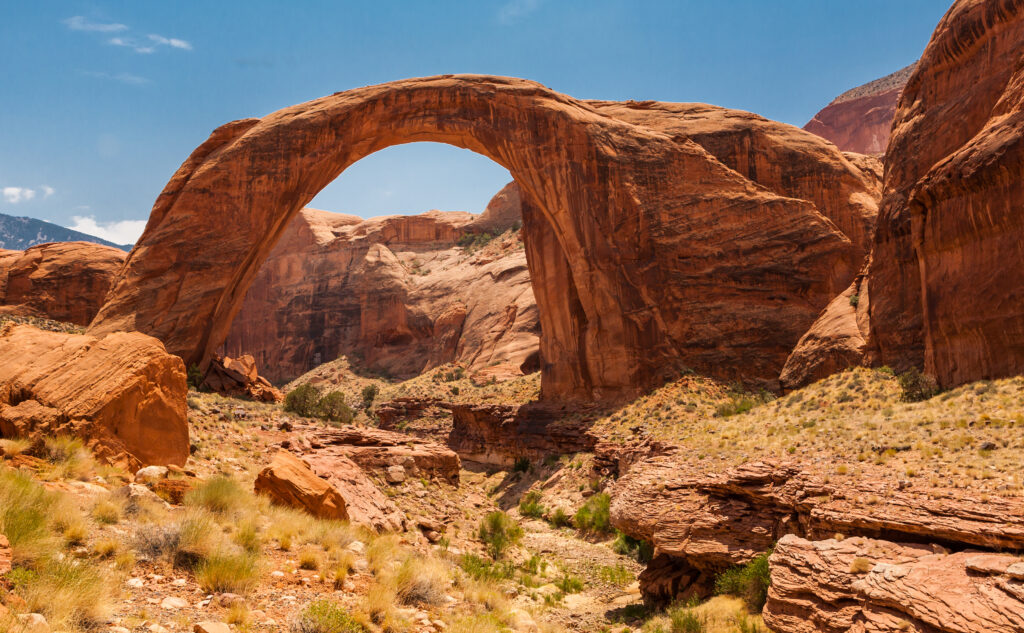
Rainbow Bridge National Monument
Utah
Tucked between Glen Canyon National Recreation Area and Navajo Nation Land in Southern Utah, one natural bridge brings a spectrum of attention.
Rainbow Bridge National Monument has been a sacred spot going back at least 8,000 years for Indigenous people. The spiritual spot is so beloved that lawsuits were filed to keep it from becoming an attraction.
Access to the monument is by boat via Lake Powell at Glen Canyon NRA or a nearly 35-mile roundtrip backcountry hike through the Navajo Nation.
It’s named after the arch shape that is considered to be a “Frozen Rainbow.” Guests are asked to respect the sacred site by only viewing it from a platform and not walking under or on the arch. Navajo legend says that anyone who breaks this guidance will be cursed with bad luck or meet an untimely end.
NOTE: Rainbow Bridge National Monument has been the least-visited monument since 2021, even though Glen Canyon NRA is one of the top 10 most visited NPS sites. That’s because the water levels of Lake Powell were too low for boat tours. Those resumed in August 2023.
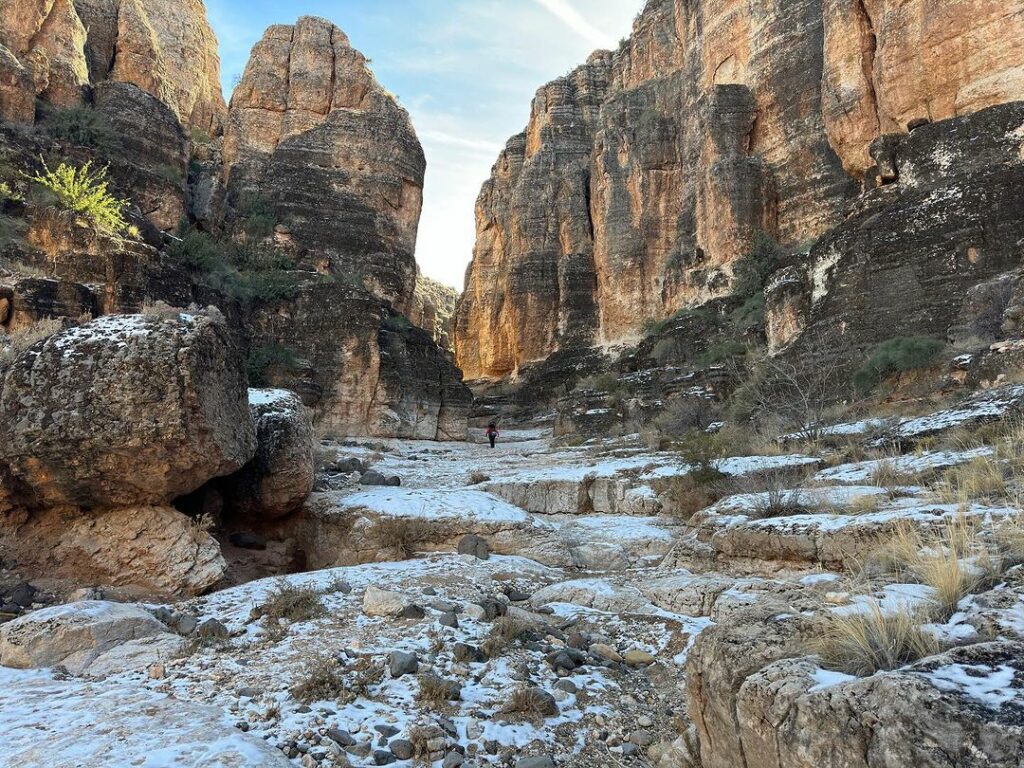
Grand Canyon-Parashant National Monument
Arizona
You’ll need to have a certain amount of grit and wilderness experience to venture into the Grand Canyon-Parashant National Monument, but once here, you’ll enjoy many benefits of the Grand Canyon without any of the crowds.
This remote spot west of Grand Canyon National Park sits at the intersection of the Mojave Desert, the Great Basin, and the Colorado Plateau. Elevations range from 1,400’ at Grand Wash Bay near the Nevada state line to Mount Trumbull at 8,000’. That’s the average elevation on the North Rim of the Grand Canyon.
The roads here are rugged, and you’ll need a high-clearance four-wheel drive vehicle to safely explore the various trails and regions across more than one million acres. The effort pays off with trails that lead to petroglyphs and some of the darkest night skies you’ll find in the United States.
WANT MORE GRAND CANYON? One of the newest additions to the list of national monuments is Baaj Nwaavjo I’tah Kukveni – Ancestral Footprints of the Grand Canyon National Monument. It’s nearly one million acres of sacred land north and south of the Grand Canyon.
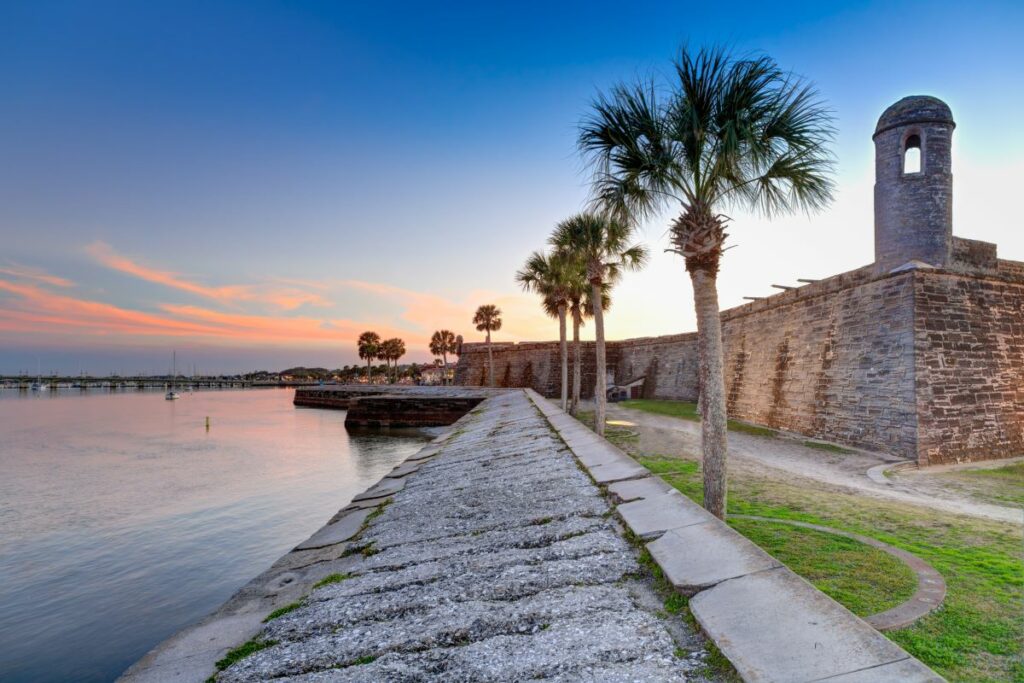
Castillo de San Marcos National Monument
Florida
When you think of Florida, sandy beaches and tropical drinks might come to mind. However, In the northeast corner of the state, America’s oldest ongoing settlement dates back to 1565, and the Castillo de San Marcos National Monument holds a military fortress tied to that history.
The Spanish Empire built the fort between 1672 and 1695. Made of coquina, a unique limestone made up of seashells, it served to defend the city against European and Native American attacks.
Castillo de San Marcos National Monument showcases colonial military architecture with a star-shaped layout and four bastions. Tours are self-guided, but people in period costumes give a living museum vibe to this national monument. Weapons demonstrations are held on weekends.
While not part of the monument, Ponce de Leon’s Fountain of Youth is just a mile away.
National Monuments of the Past
Several National Monuments are lesser known because they aren’t around anymore. That’s right – just like the National Park Service can upgrade a site to a National Park or Monument, they can also downgrade or release the site to other entities.
Fossil Cycad National Monument in South Dakota was created in 1922 to protect a fossil that resembles a small palm tree. Poor oversight from nearby Wind Cave National Park led to the landscape being cleared of any relevant fossils. By 1957, the designation was stripped.
Holy Cross National Monument inspired Henry Wadsworth Longfellow so much that he wrote “Cross of Snow” as a tribute to his late wife in 1879.
“There is a mountain in the distant West, That sun-defying in its deep ravines, displays a cross of snow upon its side.”
The monument was created in 1933 but was decommissioned 17 years later. While the stunning “fourteener” in Colorado drew amazement, it never drew the crowds needed to keep the designation. It is now part of the White River National Forest.
A Monumental Experience
Since a president can designate National Monuments, new options are being added throughout the year. President Barack Obama added 29 to the roster and expanded five more.
One perceived benefit of allowing a president to designate monuments is that it gives immediate protection of that land. Down the road, it might become a national park or national forest, but at least it can’t be developed or stripped of resources once it’s under National Monument designation.
It’s important to note that all National Monuments with entrance fees are covered under the America the Beautiful interagency pass. For just $80 a year, you (and a carload of people) get access to more than 2,000 public land locations.
Also, if you have a fourth grader, they get a free park pass for a full year, covering one carload of people. It’s part of the Every Kid Outdoors program.
No matter where you visit, please remember to follow the 7 Principles of Leave No Trace to protect these amazing lands.

